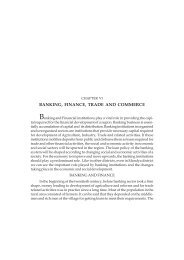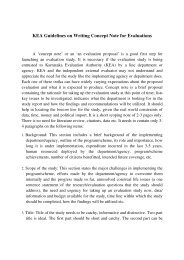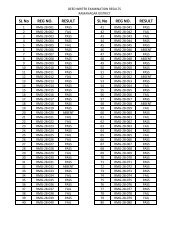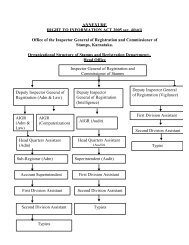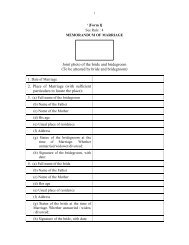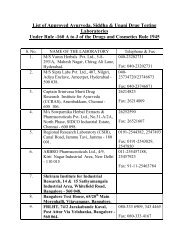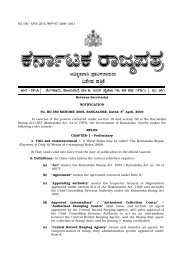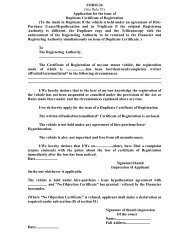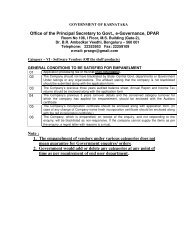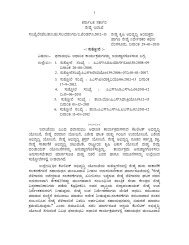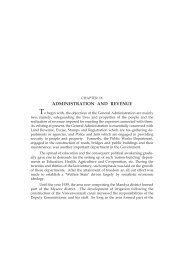Chapter XIII CULTURE - Government of Karnataka
Chapter XIII CULTURE - Government of Karnataka
Chapter XIII CULTURE - Government of Karnataka
You also want an ePaper? Increase the reach of your titles
YUMPU automatically turns print PDFs into web optimized ePapers that Google loves.
Culture 493<br />
kings ruled over large parts <strong>of</strong> the present day <strong>Karnataka</strong> and many Kannada<br />
rulers ruled over large areas <strong>of</strong> Telugu speaking country. Numerous Telugu<br />
inscriptions found in <strong>Karnataka</strong> and numerous Kannada inscriptions found<br />
in Andhra Pradesh reflect this fact. Before the advent <strong>of</strong> the Vijaynagar rulers<br />
both Telugu and Kannada had a common script. Now even though they have<br />
different scripts they are very close to each other. Palkurike Somanatha who<br />
is famous in Telugu literarture as the author <strong>of</strong>’ ‘Basava Puranamu’ is said<br />
to have written in Kannada, some <strong>of</strong> Ragales and Vachanas and works like<br />
‘Sheela Sampadane’ and ‘Sahasra gananama’. There are also works in Telugu<br />
like ‘Simhagiri Vachanas’ and ‘Venkateshwara Vachanas’ modelled on the<br />
Vachanas <strong>of</strong> Basaveshwara. The Vijayanagara period was the golden age for<br />
both Kannada and Telugu. The Vijayanagara court was the meeting place for<br />
both these languages and cultures. It provided oppurtunity for large scale<br />
exchange <strong>of</strong> ideas between the two people.<br />
In the 19th and the 20th Centuries works like ‘Chawdeshwari<br />
Puranam’ (Gummarajura Mahakavi), ‘Sukarmaneeti Chintamani’ (Komarla<br />
Ramachandraiah), ‘Padmavathi Srinivasa’ (Kahula Bhairava Kavi), etc., were<br />
written. What Sarvajna is to Kannada, Vemana is to Telugu. Bhimaraju, a<br />
Telugu poet <strong>of</strong> <strong>Karnataka</strong> translated Sarvajna’s Vachanas to Telugu and<br />
Vemana’s poems into Kannada.<br />
In recent times considerable literary activity is seen in the realm <strong>of</strong><br />
translations. Award winning works <strong>of</strong> literature <strong>of</strong> the two languages are<br />
translated to either language. In the field <strong>of</strong> translation T.V.Subba Rao, Badala<br />
Ramaiah, K.S. Janakiramaiah, R.V.S. Sundaram, Nirupama and Hariharapriya<br />
are worthy <strong>of</strong> mention and they have done commendable work.<br />
The universities <strong>of</strong> Bangalore and Mysore which have well established<br />
Telugu departments and they have helped the development <strong>of</strong> this language in<br />
<strong>Karnataka</strong>. Many research thesies on Telugu literature and culture have been<br />
submit in these two Universities. Another notable trend is the translation into<br />
Kannada <strong>of</strong> political and social satires and novels from Telugu. Telugu cinema<br />
and Kannada cinema have a very close relationship. Telugu Samiti and Andhra<br />
Vijnana Sangham in Bangalore are trying to provide a common platform for<br />
literary and cultural activities. A common script for both Telugu and Kannada<br />
languages is <strong>of</strong>ten advocated.<br />
Tamil in <strong>Karnataka</strong><br />
Kannada and Tamil originated from the same proto-Dravidian language<br />
and Kannada is as old as Tamil in antiquity. Both Kannada and Tamil have<br />
influenced each other immensely. The Pallava and Chola dynasties ruled over<br />
large parts <strong>of</strong> the present <strong>Karnataka</strong>. The Gangas, Chalukyas, Hoysalas and<br />
the Vijayanagara emperors ruled over large parts <strong>of</strong> Tamilnadu. The word<br />
<strong>Karnataka</strong> itself appears to have been a contribution <strong>of</strong> the Tamils as it is used<br />
as ‘Karunat’ in Tamil works like ‘Shilappadikaram’. The two languages are so<br />
close to each other that some <strong>of</strong> the expressions <strong>of</strong> early Kannada are also<br />
found in Tamil.



